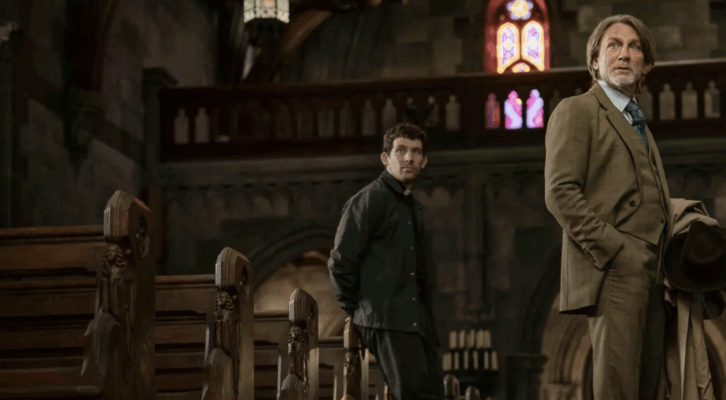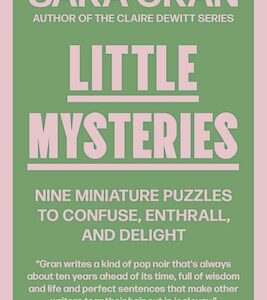Someone explodes in Charles Dickens’s Bleak House.
Yes, you read that right. Explodes.
Allow me to explain.
Within the enormous mass of events that together make up the multi-layered plot of Bleak House, there are many strange matters and even a few mysteries… and many characters, varying in the degrees to which they are affiliated with the law, chose to conduct their own investigation in these peculiar events, accounts, and problems, which include ghost stories, rumors of illegitimacy, missing documents, general affairs of lies and deceit, impenetrable court cases, and incredibly suspicious deaths.
Amid all the puzzles, and the deductions that follow them, though, there is one bizarre happening in Bleak House that remains relatively uninvestigated: the proprietor of a rag and bottle shop, Mr. Krook, randomly blows up—one of those rare cases, the narrator informs, of that dreaded medical enigma, “spontaneous combustion.”
Though this is the most far-fetched death in the novel, or perhaps because of this, it is the one oddity that remains thoroughly unchallenged by the book’s able bunch of problem solvers—the narrator declares it to be so, and this declaration is validated at the inquest in the following chapter. Not only does this death remain unchallenged, or even, un-discussed, for the remainder of the novel, but it also becomes one of the most characteristic features, even though it breaks from the novel’s general rhythm of providing answers to questions brought on by strange phenomena.
Dickens wrote:
“There is a very little fire left in the grate, but there is a smouldering, suffocating vapour in the room and a dark, greasy coating on the walls and ceiling. The chairs and table, and the bottle so rarely absent from the table, all stand as usual. On one chair-back hang the old man’s hairy cap and coat.”
He continues,
“Here is a small burnt patch of flooring; here is the tinder from a little bundle of burnt paper, but not so light as usual, seeming to be steeped in something; and here is—is it the cinder of a small charred and broken log of wood sprinkled with white ashes, or is it coal? Oh, horror, he IS here! And this from which we run away, striking out the light and overturning one another into the street, is all that represents him.
Article continues after advertisementHelp, help, help! Come into this house for heaven’s sake! Plenty will come in, but none can help. The Lord Chancellor of that court, true to his title in his last act, has died the death of all lord chancellors in all courts and of all authorities in all places under all names soever, where false pretences are made, and where injustice is done. Call the death by any name your Highness will, attribute it to whom you will, or say it might have been prevented how you will, it is the same death eternally—inborn, inbred, engendered in the corrupted humours of the vicious body itself, and that only—spontaneous combustion, and none other of all the deaths that can be died.”
As dramatic as it is in the novel, this death was certainly challenged in real life. Dickens’s friend G.H. Lewes found this development entirely improbable, and also in bad taste. In his column in The Leader, he wrote,
“The death of Krook by Spontaneous Combustion is certainly not an agreeable incident,” he wrote in “but it has a graver fault than that of ‘shocking’ people with ‘sensitive nerves;’ it is a fault of Art, and a fault in Literature, overstepping the limits of Fiction, and giving currency to a vulgar error… Dickens, therefore, in employing Spontaneous Combustion as a part of his machinery, has committed this fault of raising the incredulity of his readers; because even supposing Clairvoyance and Spontaneous Combustion to be scientific truths, and not the errors of imperfect science, still the simple fact that they belong to the extremely questionable opinions held by a very small minority, is enough to render their introduction into Fiction a mistake.”
Dickens was frustrated, and accepted his friend’s challenge. In the very next installment of the novel, he justified this narrative decision further, even citing apparent real-life cases of spontaneous combustion. In one very long sentence, he defended himself:
“Out of the court, and a long way out of it, there is considerable excitement too, for men of science and philosophy come to look, and carriages set down doctors at the corner who arrive with the same intent, and there is more learned talk about inflammable gases and phosphuretted hydrogen than the court has ever imagined. Some of these authorities (of course the wisest) hold with indignation that the deceased had no business to die in the alleged manner; and being reminded by other authorities of a certain inquiry into the evidence for such deaths reprinted in the sixth volume of the Philosophical Transactions; and also of a book not quite unknown on English medical jurisprudence; and likewise of the Italian case of the Countess Cornelia Baudi as set forth in detail by one Bianchini, prebendary of Verona, who wrote a scholarly work or so and was occasionally heard of in his time as having gleams of reason in him; and also of the testimony of Messrs. Fodere and Mere, two pestilent Frenchmen who WOULD investigate the subject; and further, of the corroborative testimony of Monsieur Le Cat, a rather celebrated French surgeon once upon a time, who had the unpoliteness to live in a house where such a case occurred and even to write an account of it—still they regard the late Mr. Krook’s obstinacy in going out of the world by any such by-way as wholly unjustifiable and personally offensive.”
Article continues after advertisement
And then, in a preface to the edition, he justifies this decision further.
The possibility of what is called spontaneous combustion has been denied since the death of Mr. Krook; and my good friend Mr. Lewes (quite mistaken, as he soon found, in supposing the thing to have been abandoned by all authorities) published some ingenious letters to me at the time when that event was chronicled, arguing that spontaneous combustion could not possibly be. I have no need to observe that I do not wilfully or negligently mislead my readers and that before I wrote that description I took pains to investigate the subject. There are about thirty cases on record, of which the most famous, that of the Countess Cornelia de Baudi Cesenate, was minutely investigated and described by Giuseppe Bianchini, a prebendary of Verona, otherwise distinguished in letters, who published an account of it at Verona in 1731, which he afterwards republished at Rome.
The appearances, beyond all rational doubt, observed in that case are the appearances observed in Mr. Krook’s case. The next most famous instance happened at Rheims six years earlier, and the historian in that case is Le Cat, one of the most renowned surgeons produced by France. The subject was a woman, whose husband was ignorantly convicted of having murdered her; but on solemn appeal to a higher court, he was acquitted because it was shown upon the evidence that she had died the death of which this name of spontaneous combustion is given. I do not think it necessary to add to these notable facts, and that general reference to the authorities which will be found at page 30, vol. ii., the recorded opinions and experiences of distinguished medical professors, French, English, and Scotch, in more modern days, contenting myself with observing that I shall not abandon the facts until there shall have been a considerable spontaneous combustion of the testimony on which human occurrences are usually received.
So there you have it.

















